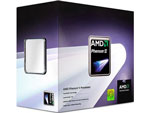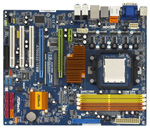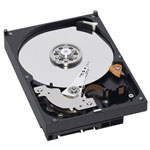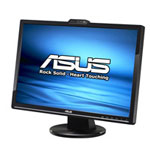Phenom II Entry
With Intel and AMD price reductions and AMD filling out the Phenom II line you can now buy a Phenom II CPU for as little as $119. With Phenom II pricing that low you can put together an entry Phenom II system for a very low price and still expect amazing performance and superb value.
If you look back at the earlier System Buyers' Guide: PCs for Under $1000, you will find our cheapest AMD system, based on the $63 Athlon 64 X2 505E Brisbane, had a base system price (before monitor, speakers, input devices and OS) of $324. Today's Phenom II Entry PC is two generations more recent, 3 cores, and 6MB L3 cache. It achieves much higher performance than the Athlon 64 X2 system and yet the base system cost is just $40 more. That represents phenomenal value and bang for the buck.
 |
Prices on all processors are continuing to drop in the face of the continued, aggressive pricing strategy adopted by Intel. The new AMD Phenom II 710 is priced at just $119, but that $119 gets you a 2.6GHz triple-core CPU with each core featuring 512KB of L2 cache (total 1.5MB). The three cores share the same 6MB L3 cache as the more expensive X4 Phenom II chips. Performance in our tests was generally competitive with the Intel Core 2 Quad at $170 and the AMD Phenom X4 9950 at $148. Clearly, the 710 is a good value at $119.
 |
The 780G chipset is one of the best budget IGP designs we have worked with over the years. This is the chipset that made integrated graphics relevant again. One of the best boards in this price category is the ASRock A780GXE. The A780GXE features the ATI Radeon 3200 integrated graphics. ASRock loads the board with six 3Gb/s SATA ports featuring RAID 0/1/10, 5.1 HD audio, Gigabit LAN, two PCI-E x16 slots, one PCI-E x1 slot, three PCI slots, and support for 16GB of memory. Durability is addressed with solid capacitors for CPU power and duracap long-life capacitors for the rest. This board has been rock solid for us and supports AM2/AM2+ and AM3 (running DDR2) CPUs.
The A780GXE has 128MB of sideport memory for additional performance. It fully supports the Phenoms I and II, and it can do dual x8 CrossFire. The A780GXE used to be a $100 board, so it is a good value at the current $80 price. If you are really pinching pennies ASRock also manufactures the A780FullHD motherboard, which is $23 less at $57. The cheaper ASRock is a Micro ATX board where the 780GXE is full ATX, and the A780FullHD does not support CrossFire. The A780GXE is the better value for most users, but if every penny counts you will not be disappointed in the performance of A780FullHD. Both boards are among the best values ever seen in the motherboard market and are solid performers.
 |
The case and power supply are the Sigma 500W La Vie Mid Tower. This case and power supply are currently on sale after a $25 rebate for $40. Sigma makes both decent cases and decent power supplies that are sold separately. While no one will mistake this case/PS combo for one of the premium Sigma offerings, it is still good quality and good value for a very reasonable price. Even if you pay the regular price of $60 to $65 you will get good value in this combo. We have built several entry systems with the Sigma case and PS and had good results and stable performance. The only caveat is to check out the case when it arrives as shipping can take its toll on the case front door.
You should generally go for the best case and power supply you can reasonably afford, so you should also look at the Phenom II OC choices of the Cooler Master Centurion and the top performing BFG Tech 550W in our recent roundup that would add just $70 to the total system price. That upgrade would be a good base for any entry to upper midrange computer system.
 |
With DDR2 prices so very low, we went for 4GB of DDR2-800 this time. This is double last year's entry recommendation for less than half the price. This 50% to 75% drop in DDR2-800 memory prices in the past year is why you're not seeing much memory advertising these days. RAM prices as a whole are certainly in the commodity category as of late. We recommended the Kingston 4GB DDR2-800 kit, but you could just as easily choose OCZ, G.Skill, Corsair, Crucial, GeIL, Patriot, or any other quality DDR2-800 name and shop for the memory based on a combination of price and the company's support reputation. Again, if you are truly pinching pennies you can save about $13 by going with 2GB of memory instead.
Hard drive capacity continues to grow, as you can see in our selection of the Western Digital Caviar 500GB for our entry system. It seems a waste to choose a lower HD capacity when 500GB is now available for around $60 - even from
www.amazon.com. While there are differences between hard drives, outside of running benchmarks most people aren't likely to notice the variation in performance between Western Digital, Seagate, Samsung, Hitachi, and other major brands. All are worthy of consideration if the price per gigabyte (or terabyte) is right.
For the optical drive we went for value with the dependable Samsung 22X DVDR. With the rise of the 25GB/50GB Blu-Ray burners, DVD writers have continued to drop in price. A DVD writer that supports double-layer and 22X DVD writes for $24 is a bargain indeed.
With the greater performance of the Phenom II Entry system, we have balanced it with a better monitor. The LCD display resolution for the Phenom II Entry system is a nominal 22" 1680x1050 LCD from ASUS for just $150. The monitor is one of the new class of monitors that more honestly report their true size and this 21.6" display would have been called a 22" by many manufacturers. This ASUS VK221D provides a lot of LCD at a tiny price in the entry system.
If you prefer a full 1080p HD monitor the ASUS 21.5" 1920x1080 LCD is available for just $30 more at $180. If you are pinching pennies you can get by with the smaller 17" Hanns-G HB-175APB 17" 8ms Widescreen LCD Monitor with 1440x900 resolution for just $99. You can also do away with speakers and save another $18 if you can live with the speakers built into the monitor.
Finally, Vista Home Premium OEM runs the system, but you could opt for an OS alternative like Ubuntu and save some money if you prefer. With Ubuntu or a similar free OS, the price comes extremely close to $500, which is awesome for a complete system packing this much performance.

















49 Comments
View All Comments
Adul - Monday, March 2, 2009 - link
The last area to discuss is input devices, where we went with gamer value favorites in the Logitech G11 USB gaming keyboard and the MX518 8-button laser mouse.This is an optical mouse. You mean the G5 Laser mouse that is found in a 8 button configuration perhaps?
oldscotch - Monday, March 2, 2009 - link
Did I read that correctly? The DDR3 kit was actually cheaper than the DDR2?If that's the case, is there any point in going with DDR2 for a new build? It would seem to me that it's better futureproofing with an AM3/DDR3 setup.
Wesley Fink - Monday, March 2, 2009 - link
As sometimes happens after we recommend a product, the etailer stopped the rebate on the Reaper 4GB DDR3-1600 and raised the price substantially. I guess that is supply and demand.A very good alternative is the Patriot DDR3-1600 7-7-7 kit at $90 after rebate, which is just $15 more than the Guide shows for the Reaper DDR3-1600 kit. You can find the Patriot Viper at http://www.newegg.com/Product/Product.aspx?Item=N8...">http://www.newegg.com/Product/Product.aspx?Item=N8... and perhaps the great OCZ Reaper DDR3-1600 7-7-7 price will be back in a few days.
whatthehey - Monday, March 2, 2009 - link
You know, I have some major issues with including mail-in rebates as part of the base system price. It would be a lot better if you removed them from the initial calculation and listed rebates in a separate column. Actually, I could swear you did that before, but it has been a while. There are many reasons for this:1) Rebates are always transitory in nature.
2) Not all companies are great about processing rebates.
3) Many people forget to send in the rebate (or don't do it quickly enough).
Just because someone has a "deal of the week" where $130 RAM is selling for $60 doesn't mean that should go into a buyer's guide. People will refer back to this guide for months perhaps, and every time they see that crazy unattainable price they're going ton wonder what they're doing wrong. I get the point that DDR3 on sale may be cheaper than certain performance DDR2 kits, but get real: DDR3 still has a price premium and likely will for the next 6-9 months.
Incidentally, the best price I could currently find for the OCZ kit you listed is now $122: http://www.avadirect.com/product_details_parts.asp...">http://www.avadirect.com/product_details_parts.asp.... That's a far cry from the $65 you originally quoted. And that really isn't particularly high - the Patriot you mention above is roughly the same price without the rebate. Oh yeah, and I'm pretty sure I saw that OCZ rebate listed as expiring on MARCH 1 2009 last week... so your claim that the "etailer stopped the rebate" is specious at best. Seems more like you picked it based on price last week and didn't bother to verify the duration of the rebate option.
The guide was pretty good overall, but with some questionable commentary and picks in places. RAM and rebates are my biggest beef, but the "Performance" system still ends up feeling like you're being overly kind to AMD. Phenom II really competes with Core 2 Quad on a clock for clock basis, and even there it loses out based on your own testing: http://www.anandtech.com/cpuchipsets/showdoc.aspx?...">http://www.anandtech.com/cpuchipsets/showdoc.aspx?... You linked that article several times, and yet somehow are still thrilled with the price and performance Phenom II offers. Here's the breakdown. (Sorry to rain on the AMD parade, but someone needs to keep reality in check.)
Sysmark 2007: Q9550 is 9.3% faster than Phenom II 940
Photoshop CS4: Q9550 is 19.8% faster.
DivX 8.5.3: Q9550 is 4.0% faster.
x264 pass 1: Q9550 is 7.0% slower. (One of the few wins for AMD, but your own text indicates this pass is not as important as the second one below.)
x264 pass 2: Q9550 is 5.6% faster.
WME9: Q9550 is 3.1% slower (a small win).
3dsmax 9: Q9550 is 5.6% faster.
Cinebench R10: Q9550 is 0.5% slower (a tie in essence).
POV-Ray 3.73 beta 23: Q9550 is 0.2% faster (another tie).
PAR2: Q9550 is 8.2% slower. (A "big" win for AMD, though I have to say I've never used PAR2 or similar. Maybe for the warez kiddiez this will matter?)
Blender 2.48a: Q9550 is 18.7% faster.
Microsoft Excel 2007: Q9550 is 68.2% faster! (Is this even real-world, or just more of an outlier?)
Sony Vegas Pro 8: Q9550 is 9.9% slower. (Another largish victory for AMD, but this is in a Sony program and I refuse to touch anything Sony.)
Sorenson Squeeze: Q9550 is 0.2% slower (tie).
WinRAR: Q9550 is 5.5% slower (cache limited test perhaps?)
Fallout 3: Q9550 is 1.1% faster (tie - game engine limited?)
Left 4 Dead: Q9550 is 5.7% faster.
Far Cry 2: Q9550 is 23.0% faster! (Wow... that's a huge margin compared to the other games.)
Crysis Warhead: Q9550 is 5.8% faster.
AMD also wins on power consumption, but even a difference of 17W (looking at the Q9650, since the Q9550S is a lower power chip that costs more) is pretty negligible for home users. That works out to around $15 per year or less, even if you're running the system 24/7 at idle (best case scenario).
As for overclocking, I'm far more confident in Intel chips when it comes time to push clock speeds and voltages. Remember that the above results are comparing a 3.0GHz AMD chip to a 2.83GHz Intel chip, and AMD is already losing. The Q9550 can frequently hit 4.0GHz, and even if AMD keeps up in clock speed that would further boost Intel scores by around 6% (i.e. they'd be at the same clock instead of AMD having a 6% advantage).
So, yeah, AMD is competitive... sort of. If you want to support the underdog, you can do so and not feel like you're giving up much. Personally, there are enough instances where Intel is clearly superior with it's old Penryn chip (Far Cry 2, Sysmark, Photoshop for example), not to mention Core i7 which is completely viable at $2000, as you've already shown. I think this final "performance" system is in there just so AMD doesn't feel bad. :-p
Note that I'm not accusing you of being biased or fanboys. That shit gets thrown around way too much. I'm just saying you could have been a bit more reserved with your praise of AMD, considering all they're really doing is closing the gap with Intel's outgoing architecture. The truly sad thing is that Core i7 is a similar size chip to Phenom II and is substantially faster (I've seen 263mm^2 vs. 258mm^2 listed), and as you pointed out Penryn is only 164mm^2. AMD is not at all in a pretty position, as Intel could drop prices on Core i7 at any time they feel it's necessary, and likewise for Penryn parts!
Kiijibari - Wednesday, March 4, 2009 - link
You might want to check the minimum fps within your games ;-)Wesley Fink - Monday, March 2, 2009 - link
I agree in concept with the idea that rebates can be confusing when included in the pricing. However, with the economy in sad shape right now we are seeing rebates in almost every product category. To ignore the rebates is to reward those who don't use rebates to reduce price.Frankly, I am almost for rewarding those who don't use the rebates, because I truly believe reducing the price is a better way to to create value, but in some categories almost every product is using a rebate to lower the price.
This time I included the rebated price but I did list the rebate amount in parentheses so readers would know which products had a rebated price. What would you suggest as a better method?
Last, I have no problem with the rebate ending on an item if that is what happened on the Reaper DDR3-1600 kit. In fact the memory has now reappeared at $99 with a $20 rebate, which makes it the same price as the Patriot, and $15 more than quoted in the guide. Details are at http://www.newegg.com/Product/Product.aspx?Item=N8...">http://www.newegg.com/Product/Product.aspx?Item=N8....
just4U - Monday, March 2, 2009 - link
What excites many of us about the PII's is it adds more options to the table for system builds. It can always be a bit of trial to fit what you want into a budget afterall. Something to consider ...Your paying (in the States) I believe 20% more for the 9550 for a mere 2% gain (overall) Here in Canada Your paying 30% more for that gain which could be spent on it, saved, or put into other parts. Those are nice options to have. Plus getting certain parts (for those that by locally) can be a bit of a pain with stock always a issues so having more options to go with is excellent.
No reason not to cheer on these new cpu's as they open up a closed market that was totally dominated by Intel... Now it's not. What's so bad about that?
whatthehey - Monday, March 2, 2009 - link
Prices I can find right now are $254.50 for the Q9550 and $214.50 for the Phenom II 940, which is indeed a 20% increase. However, it's only an ~2.5% increase in total system cost (not counting peripherals). Both prices for CPUs came from eWiz, a pretty major vendor that I've used and had a good experience with:http://www.ewiz.com/detail.php?p=HDZ940XCBX&c=...">http://www.ewiz.com/detail.php?p=HDZ940...efb4b1c0...
http://www.ewiz.com/detail.php?p=Q9550&c=fr&am...">http://www.ewiz.com/detail.php?p=Q9550&...efb4b1c0...
Moreover, their own list of parts for a Core i7 system is only $100 more for roughly similar specs, but much higher performance: http://www.anandtech.com/guides/showdoc.aspx?i=351...">http://www.anandtech.com/guides/showdoc.aspx?i=351... If you're looking at anything close to $1500 for the system, or $2000+ total, you'd have to be pretty stupid (or biased) to stay away from Core i7 right now.
just4U - Monday, March 2, 2009 - link
Oh comeon, that's just a foot in the door price.. If you price out a high end i7 setup with all the bells and whistles it's going to cost substantially more then comparable PII's or Q9x ddr2 solutions. The I7 isn't even a consideration for most and sure as hell isn't the platform that's selling like hotcakes in the desktop market. All Amd's new products have done is offer choices in one of the highest selling areas that was dominated by intel. That's something that's good all around and that's what many of us are pleased about.Also last I checked (in reference to the anandtech link) most of us are not buying $300 motherboards, Nor are we buying 3G kits. I don't know about you but If I was of a mind to pay that much for my motherboard I certainly wouldn't be settling for anything less then 6G since anything less then 4 would a downgrade.
JarredWalton - Tuesday, March 3, 2009 - link
Just to throw it out:http://www.newegg.com/Product/Product.aspx?Item=N8...">3x2GB DDR3-1600 for $100
With other price corrections and a less expensive X58 motherboard, Core i7 really isn't *that* much more than Phenom II, assuming you're buying the whole setup. If you're reusing some existing components, particularly RAM or motherboard, Phenom II has a lot more going for it. Head to head I have to agree that personally there's no way I'm spending upwards of $1000 without giving a real serious look at Core i7 platforms.
That said, I'm quite happy with my aging Core 2 Quad systems. I've got a 975X with a QX6700 (@3.2GHz) and an X38 with Q6600 (@3.30GHz). I really have no serious need for anything faster right now.